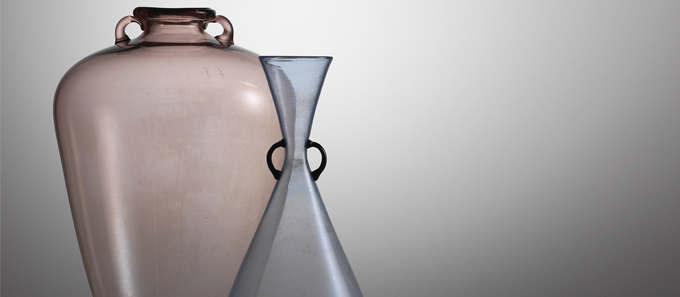
Vittorio Zecchin: Transparent Glass for Cappellin and Venini
The exhibition “Vittorio Zecchin: Transparent Glass for Cappellin and Venini”, curated by Marino Barovier, will focus on the transparent glass works designed by the artist during the 1920s for the V.S.M. Cappellin Venini & C. company and later for the M.V.M. Cappellin & C.
Born in Murano, Zecchin (1878-1947) studied at the Accademia di Belle Arti in Venice and was especially interested in the artistic trends of the time, in particular in the central European avant-garde movements. He was an important figure in the artistic circle centered around Ca’ Pesaro and the exhibitions organized there: he developed an interest in applied arts, ranging from embroidery to tapestry and especially glass, which became a passion of his.
The glass production designed by Zecchin gained momentum starting in 1921, when he became artistic director of the V.S.M. Cappellin Venini & C. glassware company, founded by Giacomo Cappellin and Paolo Venini, soon to become a reference point both in Italy and internationally.
Generally speaking, the Cappellin-Venini production differred from the Murano glass production of the time, which was characterized by extreme virtuosity. The Cappellin-Venini glass works featured classical proportions together with extremely essential shapes.
The closing of the Cappellin Venini company in 1925 did not put an end to Zecchin’s glass production. He continued to design new items until 1926 for the new M.V.M. Cappellin & C. company, which Giacomo Cappellin established after he parted with Paolo Venini.
